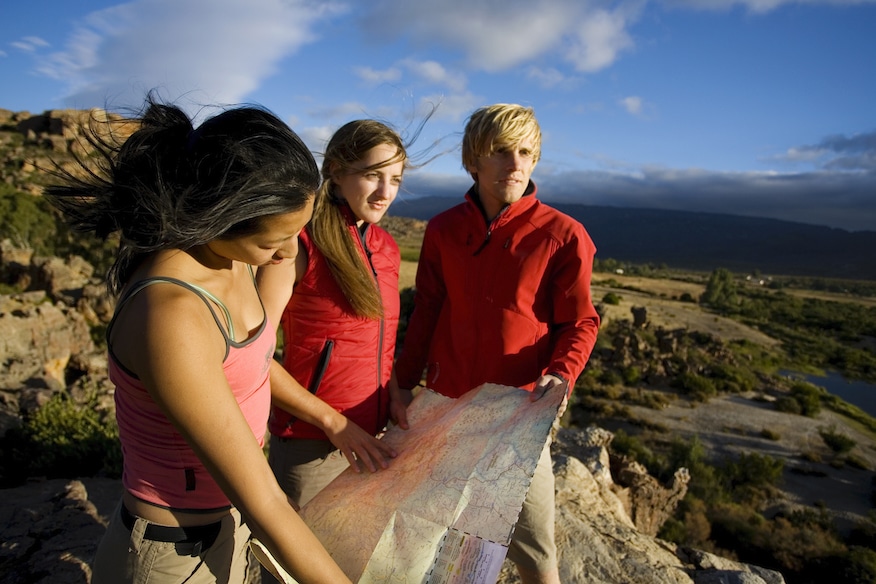Embedded in each of our outdoor and wilderness-based experiential education courses is the delivery of place-based learning, which was first introduced by David Sobel in his groundbreaking book, Place-Based Education: Connecting Classrooms and Communities.
Place-based learning connects students to history, landscape, geography, and people through the intense exploration of a specific area which, along the way, serves to help solve the area’s inherent or most recent and/or chronic challenges.
Here at The National Center for Outdoor & Adventure Education (NCOAE), our field instructors are required to research and be knowledgeable about the history, ecology, people, and events that impact a course’s geographical areas. Instructors then share that information with each other, discussing how to tie data to parts of the NCOAE curriculum and/or a client’s Custom Program requirements.
Having this depth of knowledge binds content and curriculum. The result? No topic or subject is taught in isolation. For example, the study of flora and fauna connects to math, literacy, and science. And meeting and knowing people who helped shape the land through writings or active conservation of the area ties into global studies, communication, and environmental stewardship. In this way, place-based learning benefits educators, students, and communities. For instance:
- As educators, place-based learning teaches us to investigate, explore, and understand our course areas and how they connect to learning outcomes. We then retain that knowledge and draw upon it to engage course and student participants on a deeper level.
- For students, our focus on place-based learning keeps them engaged through action, narratives, and research-based instruction. The courses we offer are intentionally challenging — but also adventurous and fun — which enables students to absorb details and take what they have learned to a higher conceptual level.
- Communities benefit from place-based learning when students learn to connect and care about a place, returning to their own community with a fistful of questions that can lead to further research and plans to turn problems into possibilities (for bettering their own communities).
Just as on a map, all destinations have a connection. By using place-based learning on NCOAE courses, we bring that connection to light. Students finish one of our courses knowing we are all connected as individuals and communities because of the actions we take and the positive impact we have on the world.
Positive impact is derived from leadership, and at NCOAE, we teach course participants how to become effective leaders. In particular, we offer one class on our North Carolina campus where students delve deep into leading others. In this particular case, examples of leadership/stewardship are given through the history of the area.
Below, for instance, is a short outline for topics that might surface for a course that take place in the Pisgah National Forest and along the North Carolina coast:
- The Vanderbilt family and its desire to save land for people to enjoy
- The flora and fauna that was protected by the creation of Pisgah
- Horace Kephart, his connection to Pisgah and the National Park movement
- River systems, conservation
- Art Loeb, Joyce Kilmer
The North Carolina Coast:
- The history of Fort Fisher
- The Wilmington Ten and the Civil Rights Movement
- Robert Harrill, “The Hermit of Fort Fisher”
- Flora and fauna, with a focus on the Venus Flytrap, indigenous to Carolina Beach
- Coastal conservation, clean water projects
We take this same format to courses offered throughout the United States and in Ecuador, Patagonia, Nepal, and other remote destinations. The idea is for students — regardless of whether they’re in grade school, high school, or college — to visit, experience, and grow through intentional exposure to the places where we teach and facilitate adventure-based experiences. The way we see it, the greatest gift we can carry with us is to see the world through a new lens that has been shaped by the people and places we encounter.
Because it’s the places we visit and the people we meet that enable us to make the greatest impact on each other’s lives.
TALK TO US
Have any further questions about our courses, what you’ll learn, or what else to expect? Contact us, we’re here to help!

Leave a comment